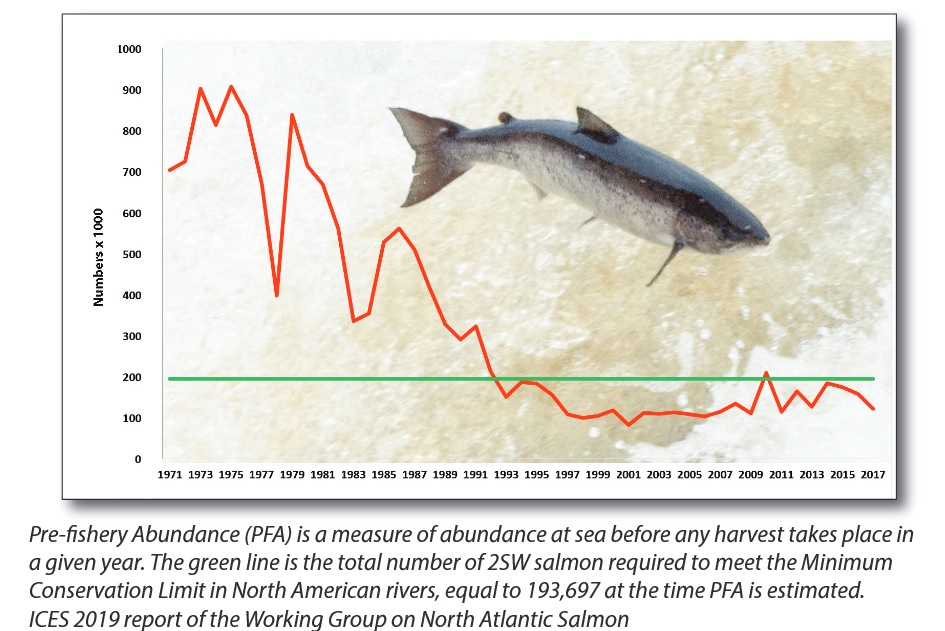New Hampshire has thrown in the towel in its efforts to restore the Atlantic salmon to our rivers – dams, pollution, baby-salmon-eating striped bass and changes in ocean temperature and acidity have proved too much to overcome. But efforts are still going on in Maine and eastern Canada.
The 2018 season was a mixed bag, according to this report from the Atlantic Salmon Federation:
Returns to U.S. rivers (Kennebec, Penobscot and Narraguagus rivers in Maine) met just 3% of the two-sea-winter salmon conservation limit. Estimated 2018 returns were 550 large salmon and 320 small salmon, a 20% and 11% drop from 2017 respectively.
Overall the small salmon, also known as grilse, which return to fresh water after just one year at sea, rebounded in 2018. Returns were estimated to be 581,000, the third highest total in the 48-year time series and 29% above 2017 estimates. The vast majority of North American small salmon (92%) return to Newfoundland and Labrador.
Returns of large salmon, which include multi-sea-winter salmon and salmon that have previously spawned, were estimated to be 131,800 in 2018, 24% lower than the estimate of 161,500 in 2017 and even lower than the estimated173,900 large salmon in 2016. The vast majority of large salmon in North America (81%) return to Labrador, Quebec, and the Southern Gulf of St. Lawrence.
Of the 878 wild Atlantic salmon rivers identified in North America, 86 were assessed in 2018. It was estimated that44% reached defined conservation limits while 33% received less than half the number of eggs required to prevent declines.


 Return to the Concord Monitor
Return to the Concord Monitor